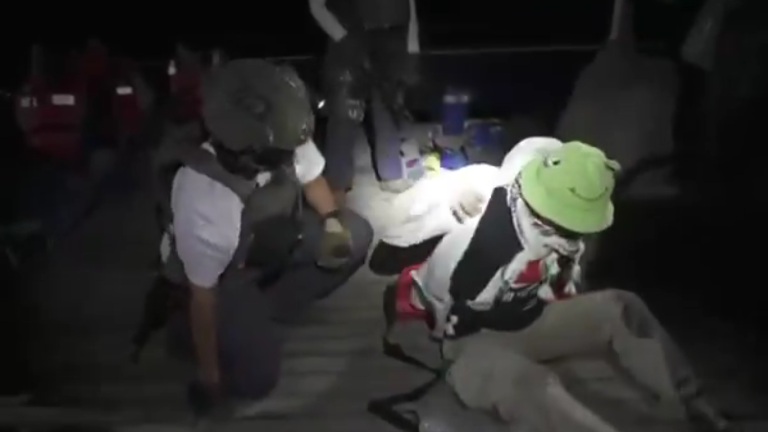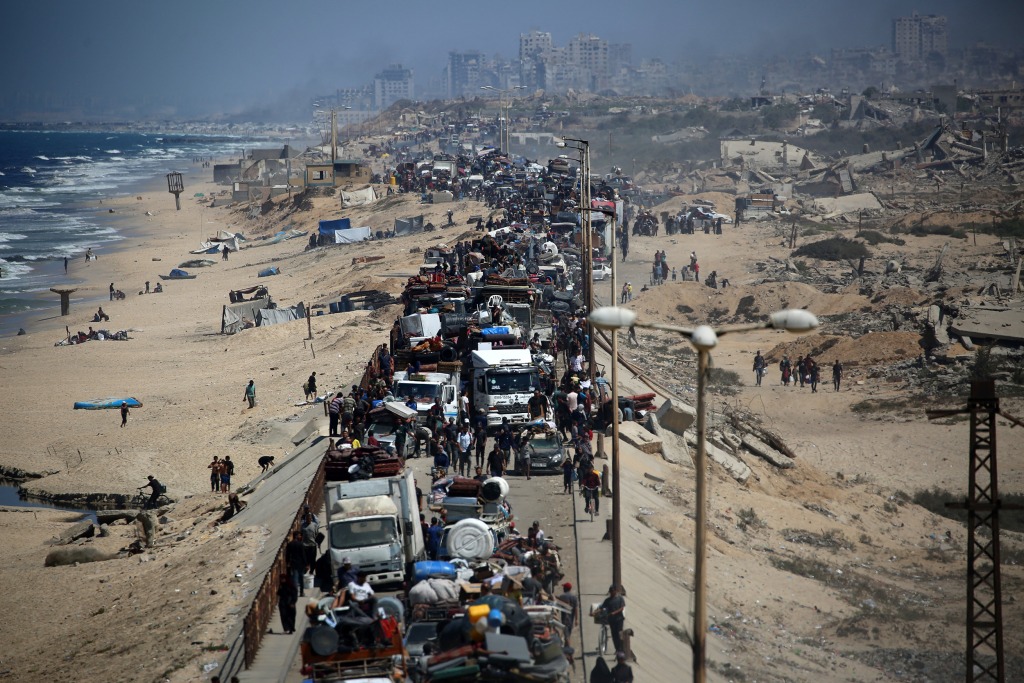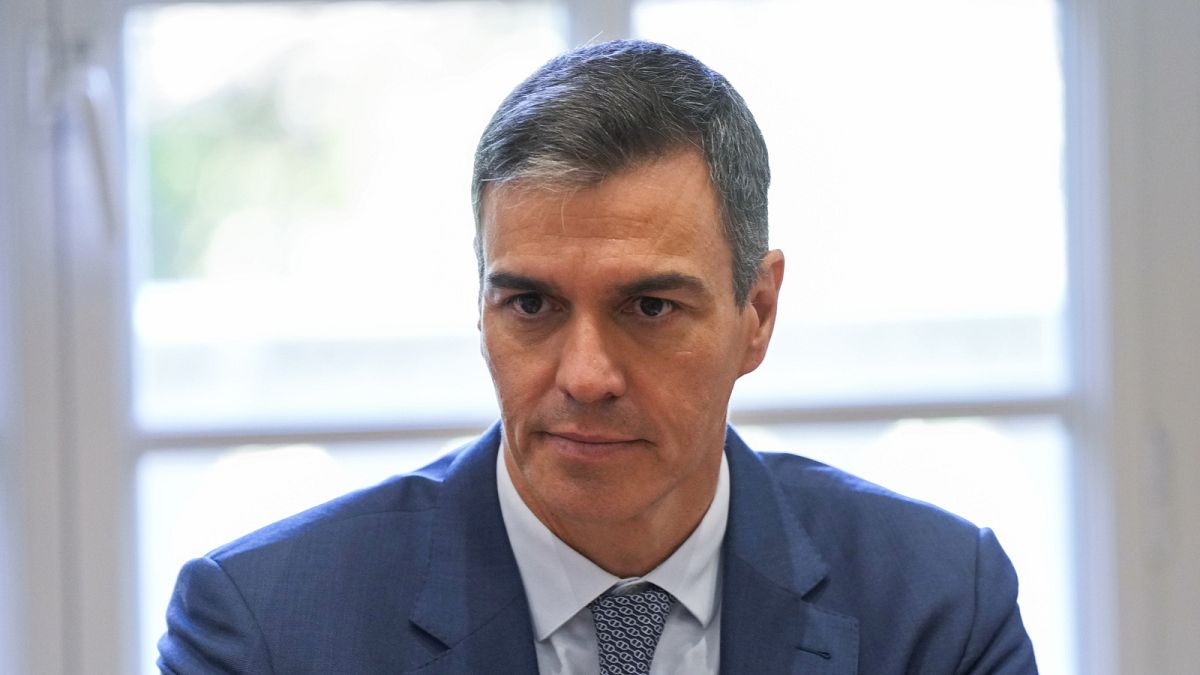President Prabowo's Full Speech at the UN Session - He Hails Growing Cohort Calling for Palestinian Statehood
Indonesia's President Prabowo Subianto addresses the 80th United Nations General Assembly at U.N. headquarters in New York, US, September 23, 2025.
(photo credit: REUTERS/MIKE SEGAR)
New York - Indonesian President Prabowo Subianto delivered his speech entitled "Indonesian Call for Hope" at the General Debate session at the 80th General Assembly of the United Nations (UN), New York, United States, Tuesday afternoon local time.
President Prabowo delivered the speech with a duration of more than 19 minutes in English, with a third speaking order after Brazilian President Luiz Inwaycio Lula da Silva and United States President Donald Trump.
In his speech, President Prabowo spoke about humanitarian issues that were not only experienced by Palestinians, but also Indonesia, which had been colonized by colonialism for centuries.
President Prabowo also raised the role of the United Nations and other organizations under the auspices of the United Nations which provided assistance to Indonesia while fighting for independence. The following is President Prabowo Subianto's full speech which is translated into Indonesian:
Bismillahirrahmanirrahim, Assalamu'alaikum warahmatullahi wabarakatuh.Shalom, Salve, Om swastiastu, Salam gukoh, Rahayu, Rahayu.
Your Excellency, Mr. Antonio Guterres, Secretary General of the United Nations. Your Excellency, Mrs. Annalena Baerbock, President of the United Nations General Assembly.
Your Excellency, Mr. Morses Abelian, Deputy Secretary General for General Session and Management. Your Excellency, Heads of State, Heads of Government, Honorary Delegations, All of you,
It is a great honor to stand in the Hall of this great General Assembly, among leaders representing almost all mankind. We are of different race, religion and nationality, but we gather as a human family.
We are here first and especially as fellow human beings each created equal, awarded the inevitable right to life, freedom, and pursuing happiness.
The words in the Declaration of US Independence have inspired democratic movements on various continents including the French Revolution, the Russian Revolution, the Mexican Revolution, the Chinese Revolution, and Indonesia's struggle and journey towards independence.
This declaration also gave birth to the Universal Declaration of Human Rights adopted by the United Nations in 1948. "All humans are created equal" is a creator who paved the way for the unprecedented global prosperity and dignity. However, in the era of the glory of our own science and technology an era that was able to end hunger, poverty, and environmental damage we also continue to face the dangers, challenges, and serious uncertainties at this time.
Human carelessness, fueled by fear, racism, hatred, oppression, and apartheid, threatens our common future. My country has felt this pain. For centuries, the Indonesian nation lived under colonial domination, oppression, and slavery. We were treated lower than dogs in our own homeland. We, the Indonesian nation, know what it means to ignore justice and what it means to live in apartheid, live in poverty, and ignore equal opportunities.
We also know what solidarity can do. In our struggle for independence, in our struggle to overcome hunger, disease and poverty, the United Nations stands with Indonesia and provides us with important assistance.
The decision made here is based on humanitarian solidarity by the Security Council and this Assembly gives Indonesia international legitimacy, opens doors, and supports our early developments through the United Nations Children's Fund (UNICEF), the United Nations Food and Agriculture Organization (FAO), the World Health Organization (WHO), and many other United Nations agencies.
And therefore, Indonesia is currently on the verge of mutual prosperity and greater equality and dignity.
The President, Your Majesty, Our World is driven by conflict, injustice, and deepening uncertainty. Every day we witness suffering, genocide, and blatant neglect of international law and human propriety.
In facing these challenges, we must not give up, as the Secretary-General of the United Nations said, "we must not give up". We must not give up our hopes or ideals. We must get closer, not further away. Together we must fight to achieve our hopes and dreams.
The United Nations was born from the ashes of the Second World War that claimed millions of lives. The United Nations was formed to ensure peace, security, justice, and freedom for all. We remain committed to internationalism, multilateralism, and on every effort that strengthens this great institution.
Currently, Indonesia is getting closer from the previous one to achieving the Sustainable Development Goal in ending extreme poverty and hunger because years ago, this assembly chose to listen and uphold social and economic justice. We will never forget. And today, we must not remain silent while the Palestinian people are deprived of the same justice and legitimacy in this hall.
His Majesty, Thucydides warned: "The strong do what they can, the weak bear what they have to bear." We must reject this doctrine. The UN is here to reject this doctrine. We must defend all, both strong and weak. The truth cannot be true. The truth must be true.
Indonesia is currently one of the biggest contributors to the United Nations Peacekeeping Force. We believe in the United Nations, we will continue to serve where peace requires guards not only with words, but with troops on the ground.
If and when the Security Council and the Supreme Assembly decide, Indonesia is ready to deploy 20,000 or even more of our sons and daughters to secure peace in Gaza or elsewhere, in Ukraine, in Sudan, in Libya, wherever peace needs to be enforced, peace needs to be maintained, we are ready.
We will bear this burden, not only with our children. We are also willing to contribute financially to support the United Nations' great mission to achieve peace.
"Mrs. President, Your Majesty, I convey to this assembly a message of hope and optimism which is based on action and implementation. Today we are listening to the speech of the President, President of the United Nations General Assembly.
It's true what he said. Without the International Civil Aviation Organization, will we be here today? Will we sit in this magnificent hall? Without the United Nations, we will not be safe. No country can feel safe. We need the United Nations, and Indonesia will continue to support the United Nations. Even though we are still fighting, we know the world needs a strong United Nations.
The world's population continues to grow. Our planet is under pressure. Food, energy and water insecurity haunts many countries. We choose to answer these challenges directly at home and help abroad whenever we can.
This year, we note the highest production of rice and grain reserves in our history. We are now self-sufficiency in rice and have exported rice to other countries in need, including providing rice for Palestine. We built a strong food supply chain, strengthened farmer productivity, and invested in climate smart agriculture to ensure food security for our children and children around the world.
We believe that in the next few years, Indonesia will become the world's food barn. As the largest archipelagic country in the world, we testify before you that we have felt the direct impact of climate change, especially the threat of rising sea levels.
Sea level on the north coast of our capital rises 5 centimeters every year. Can you imagine in ten years? In twenty years? For this, we were forced to build a giant sea wall, 480 kilometers long. It may take 20 years, but we have no choice. We have to start now. Therefore, we chose to face climate change not with a slogan, but with immediate steps.
We are committed to fulfilling the obligations of the 2015 Paris Agreement. We are targeting net zero emissions by 2060 and we believe we can achieve net zero emissions much earlier. We aim to reforestation more than 12 million hectares of degraded land, reduce forest degradation, and empower local communities with quality green jobs for the future.
Indonesia is shifting significantly from fossil fuel-based development to renewable energy-based development. Starting next year, most of our additional power generation capacity will come from renewable energy.
Our goal is clear: To eradicate all our citizens from poverty and make Indonesia the center of food, energy and water security solutions.
The President, Your Majesty, We live in a time when hatred and violence sound like the loudest sound. However, behind this noise there is a calmer truth: that everyone wants to feel safe, respected, loved, and pass on a better world to their children. Our children are paying attention. They learn leadership not from textbooks, but from our choices.
Currently, the disaster situation in Gaza is still spreading in front of our eyes. Currently, innocent people are crying for help, crying to be saved. Who will save them? Who will save innocent people? Who will save the elderly and women? Millions face danger right now, while we sit here, they face trauma, and irreplaceable damage to their bodies, they are dying from hunger. Can we remain silent? Will their screams go unanswered? Will we teach them that humanity is able to rise to face this challenge?
"Mrs. President, we must act now. Many speakers have said that. We must fight for a multilateral order where peace, prosperity and progress are not the privilege of a handful of people, but the right of everyone.
With a strong United Nations, we can build a world where the weak do not suffer what they should suffer, but live the justice they deserve. Let's continue the journey of the great ideals of mankind an unconditional aspiration that created the United Nations. Let's use science to lift, not use science to destroy. Let the rising nations help other nations to lift themselves.
I believe that the leaders of the great world civilization: Western, Eastern, North, South civilizations. Leaders of America, Europe, India, China, the Islamic world, around the world. I believe they will rise for the role demanded by history.
We all hope that world leaders will show great statesmanship, great wisdom, self-control, and humility, overcoming hatred, overcoming suspicion.
The President, the honorable Delegations, We are very heartened by the events of the last few days, in which the world's leading countries have chosen to side with the history of noble moral walks, the path of truth, the path of justice, humanity, and to stay away from hatred, overcome suspicion, and avoid the use of violence. The use of violence will give birth to violence. No country can oppress the entire community of mankind.
We may be weak individually, but a sense of oppression, a sense of injustice, which has been proven in the history of mankind, will unite with the powerful forces that will overcome this oppression, this injustice.
In closing, I would like to reaffirm Indonesia's full support for the Two-State Solution in Palestine. We must have an independent Palestine, but we must also recognize and guarantee Israel's safety and security. Only by doing so can we achieve true peace: peace without hatred, peace without suspicion.









